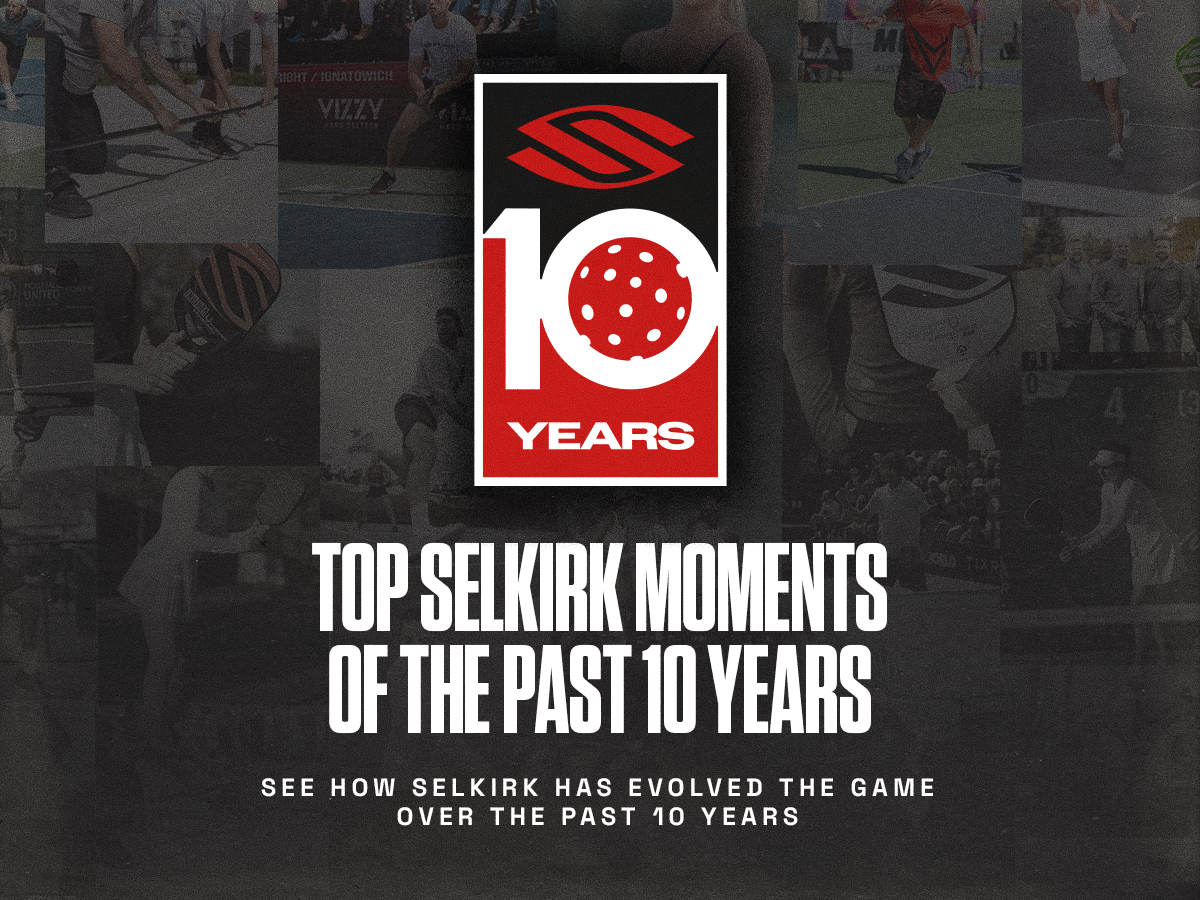
For many seniors who enjoy the game of pickleball, it can be a difficult task to get to the net quickly after returning their opponent’s serve.
Being firmly placed at the kitchen line is important because it allows you and your partner to compete on neutral ground — or even take an offensive stance — against your opponents.
In a new Selkirk Pickleball TV series, “Senior Success,” senior professional pickleball player Steve Paranto shares tips for seniors who play pickleball. In this episode, Steve shares a few tips to help you earn time as you move toward the kitchen.
Using footwork to advance yourself on the pickleball court
Beginners just learning how to execute a return of serve should always hit the ball while their feet are firmly planted on the ground. This will not only help with shot accuracy but also safety.
However, more advanced players can consider implementing a cross-step while hitting the ball to help them gain a little more court space. This cross-step, which is also used in tennis, is sometimes called the “chip and charge step.”
When implementing this cross-step, you should still start your return of serve as normal. Turn your body sideways, with your hips parallel to the sideline, to load your paddle arm behind the ball.
However, rather than keeping your feet planted, cross your back foot over your right foot as you make contact with the ball. Use this momentum to carry you toward the kitchen line.
Remember to keep your shoulders level as you swing through the ball so that you don’t hit it out of the court or into the net.
Common errors that cost you time after the return of serve
There are a few common mistakes many new players make that cost valuable time that could be used to advance to the kitchen line. Avoid these common mistakes:
- Admiring your shot. If you hit a good return of serve, that’s great! Just don’t get caught watching. You did the work to set yourself up well, now follow it up by advancing to the non-volley zone.
- Keeping your arms still. Your arms can be a powerful tool to help create the momentum you need to get to the line. Don’t be afraid to pump them as if you’re finishing a race.
- Hitting a hard groundstroke. If you hit the ball hard and fast to your opponent, they will likely return it just as quickly. Give yourself time to get to the net by hitting a high-floating ball.
How to buy time if you’re stacking
In more advanced play, you and your partner may consider stacking — the practice of switching positions after the return of serve to play on one’s preferred side of the court.
While this tactic has its benefits, stacking can make it even more challenging to get to the kitchen after the return of serve because you have even more ground to cover. Rather than running straight forward, you must advance diagonally on the court.
To help buy more time, hit a high-floating return to the player straight in front of you. This will give you more time to get to your desired spot with less fear of receiving a passing shot from your opponent.
If you were to hit your return of serve to the opponent who served the ball, positioned diagonally from you, it would be easy for them to hit a hard groundstroke to the sideline of the court straight in front of them. To receive the shot, you would have to run from your baseline to the opposite diagonal sideline, which is a significant area of the court to cover.
If, however, you return the serve to the person in front of you, they would have to hit a cross-court groundstroke to target the same area of open court. This is a much lower-percentage shot so the odds are low that your opponent would choose this shot and make it successfully.
As you are moving toward the kitchen, your partner — who is already positioned at the kitchen — should slide to their desired position. As they do so, they should cover more than half of the court so that you can get safely to the line.
Once you are positioned at the line, you can resume your normal partner positioning.
Download the Selkirk Pickleball TV app HERE to watch the complete episode and many other Selkirk TV original shows, podcasts, lesson series from the pros, and much more.






















































